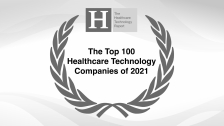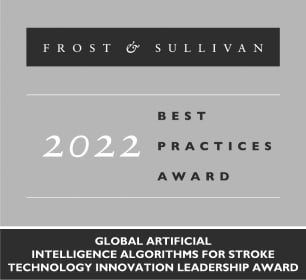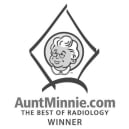At RapidAI, we understand that technology is just one part of any successful patient outcome. From the person who picks up the phone to call 9-1-1, to the first responders, doctors and other healthcare professionals providing care, there are many heroes in each story. Here, we spotlight these incredible individuals who are saving and changing lives in our Rapid Hero Stories.
Even though Maureen Hatcher had a mechanical heart valve, she was a completely functional 62-year-old woman who led a very active life. So much so, she was perfectly able to live alone, with her two dogs, in a quiet neighborhood where everybody knew everybody else. All of which worked in her favor when she woke up one morning not feeling well.
Her son, who was out of town at the time, called her that morning to check in on her. Although she still wasn’t feeling quite herself, he did not notice anything that caused him to worry about her. But later that morning, her doorbell camera recorded her dogs barking.
A couple hours after that, the same camera recorded the dogs leaving the house and heading over to her neighbor’s home. There they continued to bark until the neighbor, who knows the dogs are never out by themselves, figured there must be something wrong and went over to Hatcher’s house to investigate. When she got there, the front door was halfway open. She entered the house to find Hatcher on the floor in a confused state of mind. That’s when the neighbor called 911.
When the EMTs arrived a few minutes later, they found Hatcher unable to move her left arm and left leg. She was also speaking incoherently. They notified the hospital that they had a stroke patient and brought Hatcher to Baptist Medical Center in Jacksonville, Florida, a certified comprehensive stroke center (CSC), where on-call neurologists and neurointerventionalists were waiting to receive her.
When she got to the hospital, Hatcher had a non-contrast CT (NCCT) scan which showed she had had a small stroke with an ASPECT score of 8. Prior to that CT, her initial National Institute of Health Stroke Scale (NIHSS) score was 14. She was then given two more scans, a CTA and a CT perfusion.
Her doctors were able to view all of these images on their mobile phones right away, thanks to the Rapid platform.
Dr. Nima Amin Aghaebrahim, Hatcher’s interventional neurologist, estimated that she was probably more than seven hours out from when she was last well. But he couldn’t really be sure. What he did know, and what the Rapid platform showed him and his team almost immediately, was how much of Hatcher’s brain had been damaged and how much was at risk of further damage. And here again, she was lucky.
“This is where the Rapid CTP results became very helpful,” Aghaebrahim said. “They showed there was a large mismatch in spite of the time window, so that indicated Mrs. Hatcher could make a full recovery if she underwent immediate revascularization. Once we identified the area at risk and the large vessel occlusion causing the problem, we took her straight to the angio suite where we were able to achieve a successful recanalization with mechanical thrombectomy within minutes.”
“But she was extremely lucky she got to us when she did as time is brain, that the Rapid platform allowed us to view her stroke so quickly, and that we were able to treat her in time," Aghaebrahim continued. "Not to mention the fact that her dogs knew she was in distress, got out of the house, and alerted her neighbor. I have never heard of such a thing before."
Post-procedure, Hatcher’s symptoms began to improve almost immediately, and she had an NIHSS score of 3. By the third day, her score was down to zero. She was seen three months and then six months post-op, and she’s now fully recovered and back to her normal, active self.
She even got another dog.
”RapidAI helped identify a large mismatch number in spite of Mrs. Hatcher being seven hours out, so that was very helpful. Secondly, RapidAI helped accelerate the workflow once the patient got to the hospital, allowing us to identify the blockage and open it relatively quickly. Having those capabilities helped lead to a good outcome.”
RapidAI gives stroke teams and their patients more of what they desperately need: time. By notifying the entire stroke care team—doctors, emergency personnel and logistics—at the earliest possible moment and giving them the patient images and information they need to make the best possible decisions, they can save lives.
“RapidAI has a significant benefit in a few areas. First, Rapid CTP is a window into the physiological event that happened in the brain. Second, it provides a platform where other results from NCCT and CTA scans can be viewed on our mobile phones, all in one place, as they become available. That also allows us to review images and identify a large vessel occlusion, an NIHSS score, or if there’s bleeding, without having to log into a computer or be at the hospital. The third way the software is helpful, is its ability toidentify patients who have a mismatch but the CT may be unclear. So sometimes the CT may not be as clear as to show a clot, but it can identify patients who could potentially have a large blockage that cannot be captured in the CTA. I’ve always pushed for faster reviewing of images. Now, through RapidAI, we have it.”
The Rapid platform lets physicians like Dr. Nima Amin Aghaebrahim review results and source files within minutes of a patient’s scan via PACS, email and the Rapid Mobile App. This CT perfusion map helped Aghaebrahim quickly assess the patient’s salvageable brain tissue and provide successful acute stroke treatment.


